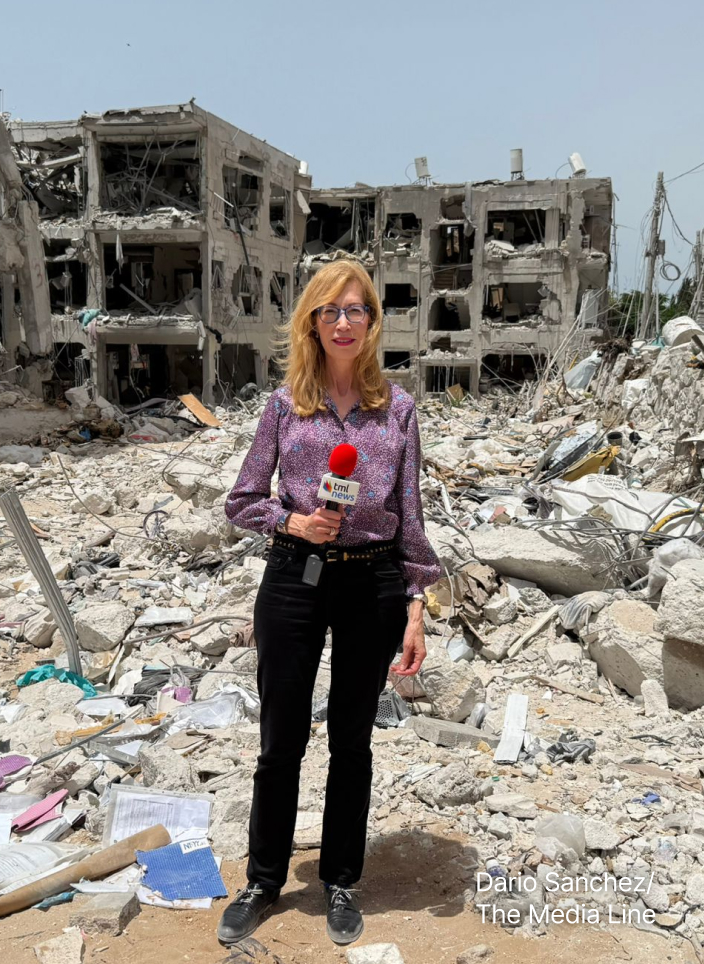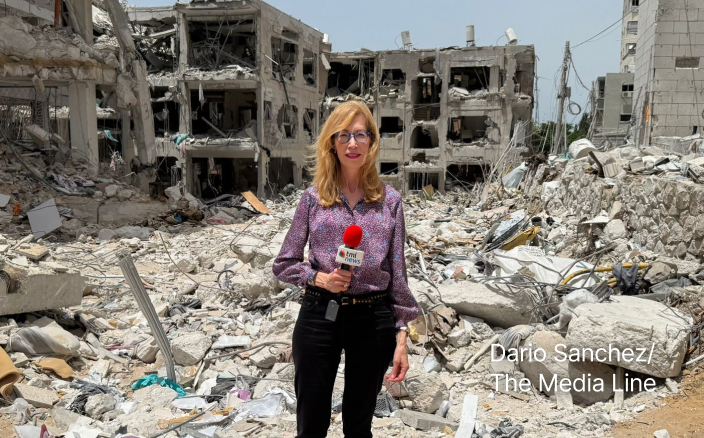Less than a week after a US-backed ceasefire took effect, Israel said an engineering unit came under coordinated sniper and anti-tank fire near Rafah, prompting retaliatory strikes in southern Gaza and marking the first major test of President Donald Trump’s 20-point plan. The truce—brokered with the aim of halting two years of war, enabling phased demilitarization, and opening the way to reconstruction—now faces a core question: can a ceasefire hold if armed groups retain the means and intent to attack?
Hamas has no intention of laying down their weapons and really adhering to the agreement, and therefore Israel will have to deal with this and dismantle them
“Hamas has no intention of laying down their weapons and really adhering to the agreement, and therefore Israel will have to deal with this and dismantle them,” Brig. Gen. (res.) Amir Avivi, founder of the Israel Defense and Security Forum, told The Media Line. “I don’t see any scenario where it’s not the IDF going in and doing the job.”
Avivi—drawing on decades commanding troops along Israel’s southern front—argues the Rafah ambush shows Hamas remains organized in areas the Israel Defense Forces (IDF) have not fully cleared. “There is at least a brigade and a half that were not really degraded at any point in this war,” he explained. “We cannot have a reality where Hamas starts attacking our positions and maybe at a certain point, kidnapping a soldier. They want to create some kind of Lebanon-style arrangement that Israel can agree to. We have goals of war to achieve, and it’s just a matter of time until the IDF will operate to dismantle them.”
Israeli officials said the army struck back within hours, targeting positions of armed groups in the south. The exchange of fire was brief but consequential, exposing a gap between the plan’s paper commitments and conditions on the ground. Mediators—the US, Egypt, Qatar, and Turkey—have urged restraint since the truce began, with diplomats pushing verification steps to prevent a slide back into broad combat.
Analysts describe a wider pattern inside Gaza since the cessation took effect. They say Hamas has reasserted control in several districts and moved against rivals under the label of “collaborators.”
“It simply can’t be otherwise,” said Dr. Harel Chorev of Tel Aviv University’s Moshe Dayan Center, speaking with The Media Line. “Despite the agreement to Trump’s 20-point plan, Hamas has no intention to dismantle itself, no intention whatsoever. They want to stay in control, to keep their weapons, their production abilities, and to make sure everybody in the Gaza Strip fully understands that Hamas is the boss.”
It simply can’t be otherwise
According to Chorev, the Rafah ambush looked like a “combined operation” using snipers and anti-tank fire—evidence that units can act with autonomy even without centralized orders. “Any Hamas operative knows exactly what to do when he sees an Israeli tank,” he said. “They don’t need commanders to tell them. This is how the future is going to look if we don’t deal with it.”
Give the gift of hope
We practice what we preach:
accurate, fearless journalism. But we can't do it alone.
- On the ground in Gaza, Syria, Israel, Egypt, Pakistan, and more
- Our program trained more than 100 journalists
- Calling out fake news and reporting real facts
- On the ground in Gaza, Syria, Israel, Egypt, Pakistan, and more
- Our program trained more than 100 journalists
- Calling out fake news and reporting real facts
Join us.
Support The Media Line. Save democracy.


Chorev places the incident within what he describes as a doctrinal rhythm. “It’s hard for Westerners to understand the jihadi mindset,” he explained. “They don’t analyze things as we do. They constantly push the limits, test the borders, and when cornered, they agree to stop—only to resume later. Their concept of hudna isn’t a ceasefire in the Western sense; it’s a tactical pause allowed by Islam until they can fight again.” That logic, he said, makes voluntary disarmament unlikely. “It will have to be imposed. Their word is worth nothing,” he added. “Even now, they talk about a three-to-five-year ceasefire. Why not forever? Because they are a jihadi organization. They will re-militarize at the first opportunity.”
The framework signed in Sharm el-Sheikh calls for an immediate halt to fire, staged disarmament, expanded humanitarian access, and a path to Palestinian self-administration under international oversight.
Prof. Kobi Michael, a senior researcher at the Institute for National Security Studies and the Misgav Institute for National Security and Zionist Strategy, and a former deputy director-general at Israel’s Ministry for Strategic Affairs, told The Media Line the situation “is very fragile,” saying: “It was breached even on the first day, when Hamas sent people to the yellow line to provoke the IDF. Later they sent armed militants, and some were killed because of IDF retaliation. Hamas reconstitutes itself from the first minute of this ceasefire, and they don’t indicate any intent to realize the next phases of the plan.”
Michael says the plan can still work if political and security tracks advance together, anchored in the agreement’s enforcement tools. He points to Article 17—authorizing an International Stabilization Force and a transitional technocratic authority to administer areas without Hamas. “Israel has to push in this direction,” he said, “first to assure that President Trump remains in the picture, and second to establish the required legitimacy to resume the war against Hamas in the northern part of the Gaza Strip.”
At present, he cautions, the legitimacy to escalate is brittle. “Hamas intends to remain there,” Michael said. “They say very clearly that they will not dismantle themselves until a Palestinian state is established, and they will transfer their weapons only to that state’s army. What can be clearer than that?”
Even so, Michael counsels measured responses to maintain international backing. “Israel has to prove that it keeps the agreement,” he said. “Whenever Hamas breaches it, Israel should respond—until the American president is convinced that the problem is Hamas. Then Israel will be able to operate much more freely.”
Avivi—who now speaks for a network of reserve officers and security professionals—echoes the need to pair restraint with readiness. “This is a moment of test for both the American president and Israel,” he said. “The only way to send a crystal-clear message that we’re not going to agree to any reality but the dismantling of Hamas and the demilitarization of Gaza is to maneuver, to push ahead and attack.” He added that the coming days would show “whether diplomacy works,” while warning that “unfortunately, they’re going to choose the hard way.”
He also outlined the military conditions he considers non-negotiable for a durable peace. “Israel will have to have full freedom of operation all over the Gaza Strip to impose this demilitarization,” he said. “I don’t see any other entity being able to deal with all these tunnels. You cannot talk about a new government before you physically dismantle them.”
There is a difference between winning and victory
Michael frames end-state success in political terms, not only battlefield metrics. “There is a difference between winning and victory,” he said. “Winning is the military achievement; victory is the realization of the political objectives of the war.” He listed five such objectives: dismantling Hamas, demilitarizing Gaza, releasing hostages, installing a new civilian governance committed to peace, and ensuring Israel’s security with full freedom of action. “If these objectives are realized,” he said, “we can talk about an absolute victory.”
For Chorev, the challenge extends into the social sphere. “It’s easier than ever for Hamas to recruit new fighters,” he noted. “People have no work, no income. But it’s not the same quality of terrorists as before; they lack training and experience. Still, they are a product of Hamas’s radical education system, and that is why de-radicalization must be part of the future.”
With diplomats pressing verification steps and Israeli officials pledging to retaliate for breaches while staying within the agreement’s terms, the next few weeks will determine whether the truce stabilizes or unravels. The experts broadly agree on the paradox facing Jerusalem: it must show restraint to preserve diplomatic legitimacy, even as restraint risks inviting further attacks. For Avivi, the calculus is blunt—coordination with Washington is decisive. “The most crucial thing is the coordination between Israel and the US,” he said. “All the countries agreed that Hamas needs to be demilitarized. They’re not doing so, they’re not returning all the hostages, and now they’re attacking Israeli soldiers.”
He argues the US should leverage regional partners to enforce compliance. “The US definitely has the means to pressure both Egypt and Qatar,” Avivi said. “But the biggest pressure of all is enabling Israel and the US to do whatever they want in Gaza and showing them that they are irrelevant if they don’t coerce Hamas to adhere to the agreement.”
Asked to define victory, Avivi returned to basics. “Just adhere to the agreement,” he said. “Hamas lays down its weapons, they get out of Gaza, forces go in, Gaza is completely demilitarized, and there is a technocratic government—not Hamas, not the Palestinian Authority. Gaza poses no threat to Israel.”
Israeli officials say they will judge the truce by what happens next on the ground, not by statements. For now, the front is tense but relatively quiet—an uneasy pause that all sides concede could give way to renewed combat if verification fails and the plan’s enforcement mechanisms do not take hold.